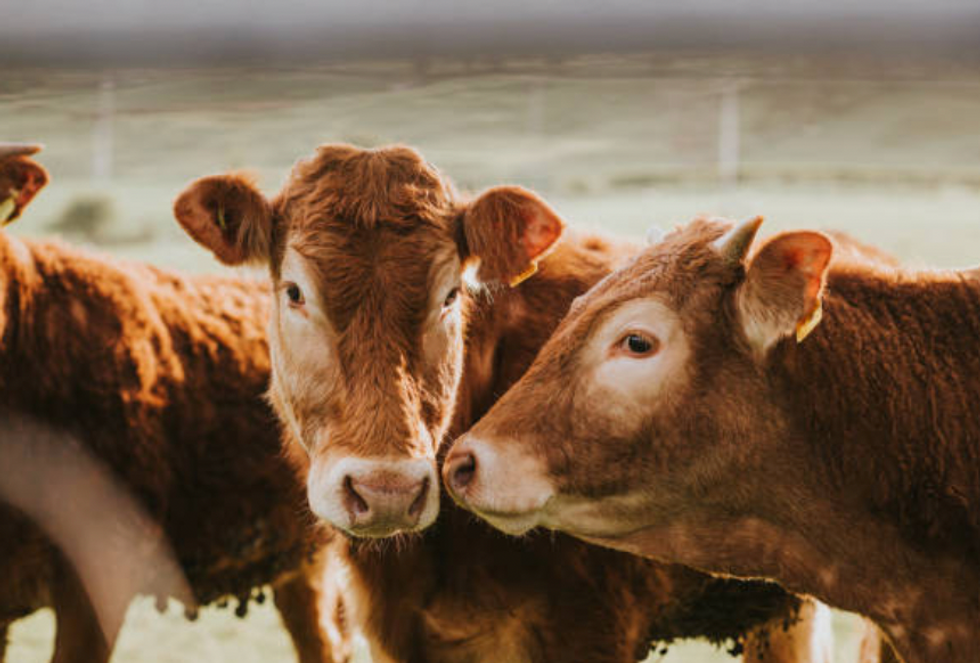Virus with 50% mortality rate takes 'dangerous' step towards spreading in humans simply by breathing

The H5N1 virus may have the ability to bind to cells in the upper respiratory tract of humans

H5N1 has been confirmed in 100 dairy herds across 12 states in America
- Bird flu could infect the upper respiratory tract of humans
- Four people working with dairy cows in the US have been infected
Don't Miss
Most Read
The latest version of bird flu that's currently circulating in dairy cows across the US could soon spread between humans simply by breathing, scientists fear.
The H5N1 strain was first confirmed in dairy cattle in March. Since then, more than 100 farms in 12 states have reported cases.
Four people working closely with dairy cows have also been infected.
There's no immediate cause for concern: the symptoms in humans have been mild and all have made a swift recovery.
Plus no human-to-human transmission has been reported so far.
A spokesperson for the UKHSA told GB News on Wednesday that the current risk to the UK population from influenza A (H5N1) virus is "very low".

More than 100 farms in 12 states have reported cases of H5N1
| Getty ImagesHowever, in the hundreds of cases where humans have been infected through contact with animals over the past 20 years, “the mortality rate is extraordinarily high”, the UN health agency’s chief scientist, Jeremy Farrar recently warned.
Between January 2003 and March 28, 2024, the World Health Organization reported 888 human cases of bird flu infection, and 52 pecent were fatal, according to the organization’s latest report.
Now scientists have found evidence that the H5N1 strain has gained a mutational upper hand that could facilitate its spread between humans.
To better understand the characteristics of the bovine H5N1 viruses, researchers from the University of Wisconsin-Madison conducted experiments to determine the ability of the H5N1 strain to replicate and cause disease in mice and ferrets, which are routinely used for influenza A virus studies.
Ferrets are thought to be a good model for understanding potential influenza transmission patterns in people because they exhibit similar clinical symptoms, immune responses and develop respiratory tract infections like humans.
To test whether bovine H5N1 viruses transmit among mammals via respiratory droplets, such as emitted by coughs and sneezes, the researchers infected groups of ferrets (four animals per group) with either the cow-linked H5N1 virus or H1N1 influenza, which is known to transmit efficiently via respiratory droplets.
One day later, uninfected ferrets were housed in cages next to the infected animals. Ferrets infected with either of the influenza viruses showed clinical signs of disease and high virus levels in nasal swabs collected over multiple days.
However, only ferrets exposed to the H1N1-infected group showed signs of clinical disease, indicating that the cow influenza virus does not transmit efficiently via respiratory droplets in ferrets.
So far, so good, right? Not exactly. Typically, avian and human influenza A viruses do not attach to the same receptors on cell surfaces to initiate infection.
The researchers found, however, that the bovine H5N1 viruses can bind to both, raising the possibility that the virus may have the ability to bind to cells in the upper respiratory tract of humans.
LATEST DEVELOPMENTS
Please write at least 1 paragraphs
“Collectively, our study demonstrates that bovine H5N1 viruses may differ from previously circulating HPAI H5N1 viruses by possessing dual human/avian-type receptor-binding specificity with limited respiratory droplet transmission in ferrets,” the authors said.
Although researchers found the cow virus could not spread easily by breathing, there are still grounds for concern.
As Doctor Ed Hutchinson, from the Medical Research Council and University of Glasgow Centre for Virus Research, explains, "When they [the scientists] compared their cow flu isolate to bird flu they found that it had already begun to gain some of the properties that would be associated with the ability to spread effectively through respiratory infections in humans".
Doctor Hutchinson, who was not involved in the study, added: "To be clear, it does not appear to be doing this yet, and none of the four human cases so far reported have shown signs of onward transmission.
"However, this new H5N1 influenza virus would be even harder to control, and even more dangerous to humans, if it gained the ability for effective respiratory spread.
"Although it is good news that cow flu cannot yet do this, these findings reinforce the need for urgent and determined action to closely monitor this outbreak and to try and bring it under control as soon as possible."
The Centers for Disease Control and Prevention (CDC) is doing just that by closing monitoring the spread of the disease on a state and national level.
The US Department of Health and Human Services also recently awarded Moderna $176 million (£139m) to develop a human vaccine for H5N1 avian influenza.










